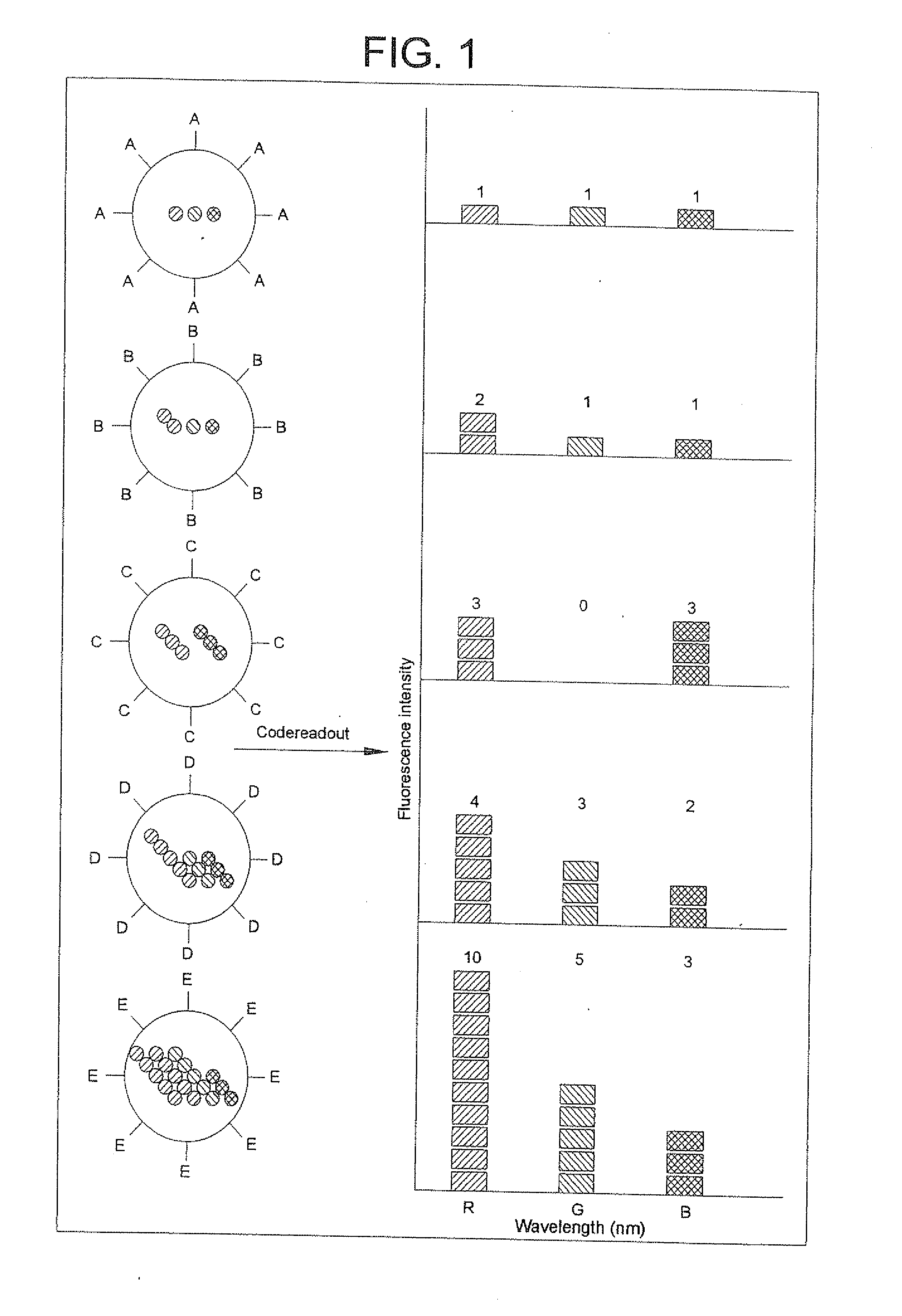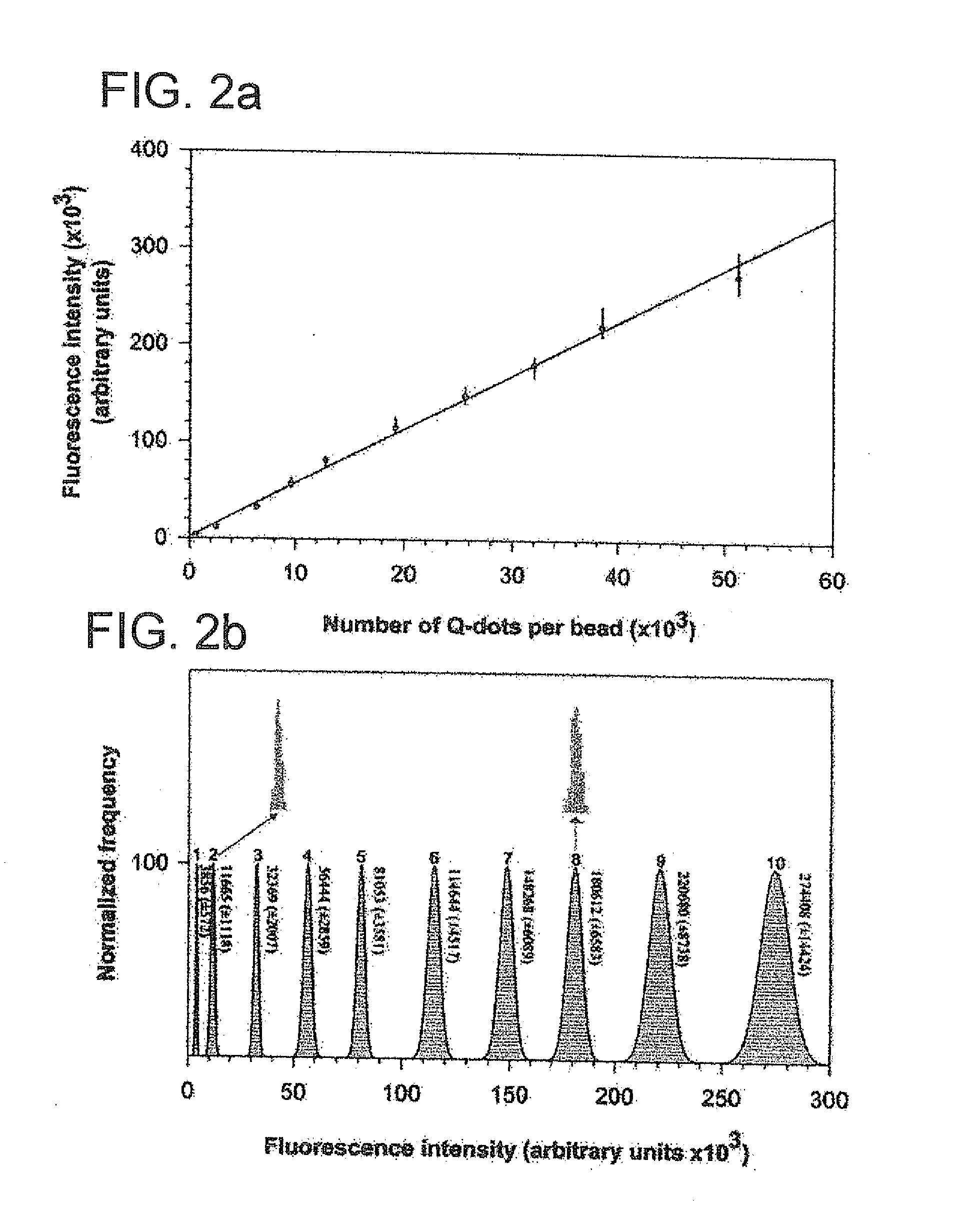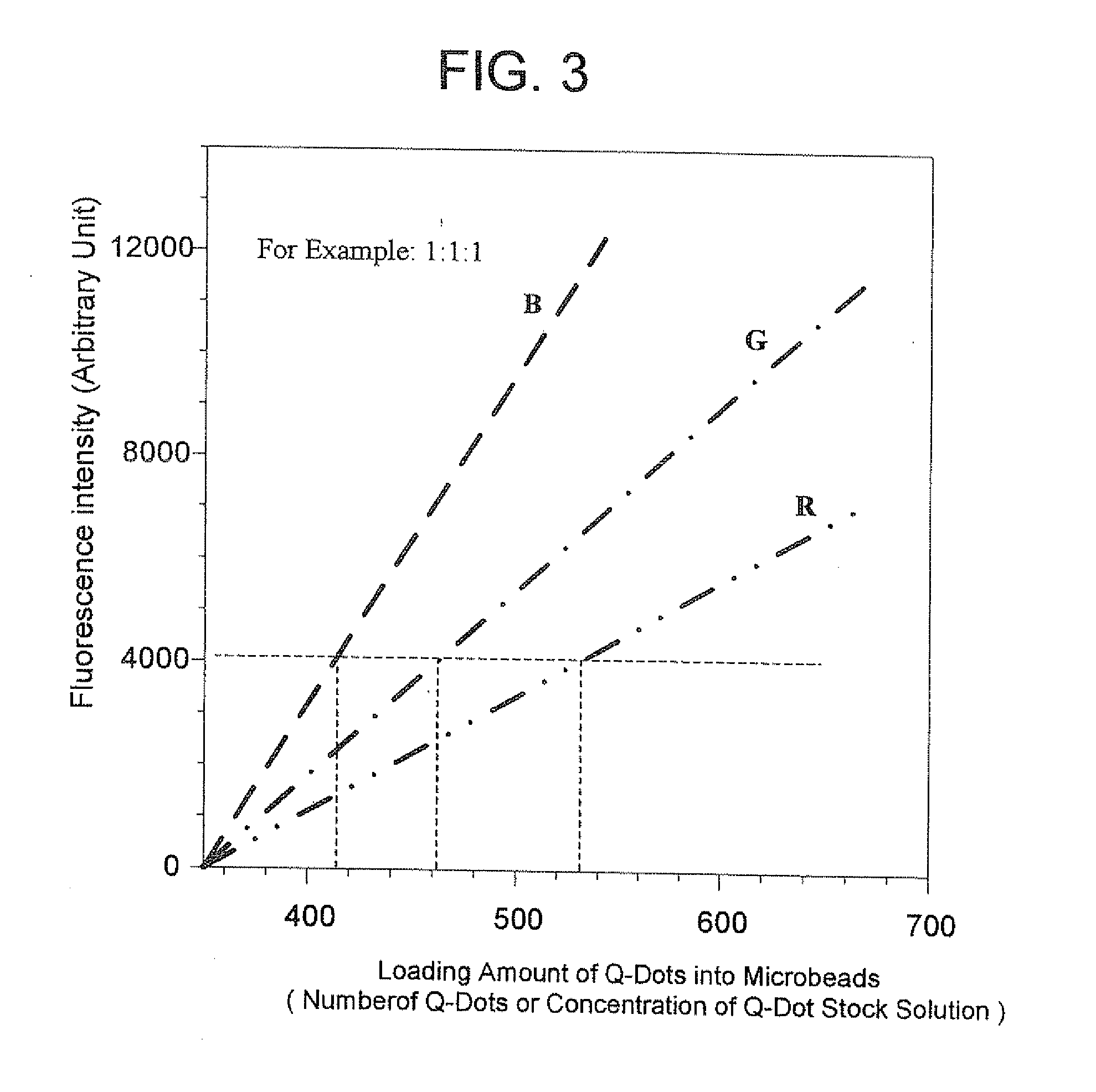Methods of Preparing Multicolor Quantum Dot Tagged Beads and Conjugates Thereof
- Summary
- Abstract
- Description
- Claims
- Application Information
AI Technical Summary
Benefits of technology
Problems solved by technology
Method used
Image
Examples
example 1
[0092] This example illustrates the formation of polymer beads formed by standard emulsion polymerization.
[0093] Polystyrene beads were synthesized by using standard oil and water (o / w) emulsion polymerization at 70° C. in the following methods:
[0094] In the first method, the oil phase consisted of styrene (98% v / v), divinylbenzene (1% v / v), and acrylic acid or a derivative such as mono-2-methacryloyloxyethyl succinate (1% v / v) in the presence of the radical initiator AIBN and stabilizer SDS.
[0095] In the second method, the oil phase consisted of styrene (93% v / v), divinylbenzene (1% v / v), acrylic acid or a derivative such as mono-2-methacryloyloxyethyl succinate (1% v / v), and 5% dodecane (or octane, decane) in the presence of the radical initiator AIBN and stabilizer SDS. P. A. Lovell, Mohamed S. El-Aasser, “Emulsion polymerization and emulsion polymerization”, Wiley, Inc., (1997).
example 2
[0096] This example illustrates the formation of porous polymer beads by successive seeded emulsion polymerization.
[0097] In this procedure, small latex particles (100200 nm diameter) were grown to larger sizes in the presence of a monomer, an initiator, and an emulsifier. In one example, a mixture was formulated from 10 ml polystyrene seed particles, 20 ml distilled water, 3 ml cyclohexane, 50 μl acrylic acid, 4 ml styrene, 200 μl divinylbenzene, 10 mg benzoyl peroxide, and 30 mg sodium dodecylsulfonate (SDS). The mixture was stirred at room temperature for 18 hours to allow the monomer and the cross-linking reagent to swell the seeds. A stream of nitrogen gas was then purged into the mixture for five minutes, and the temperature of the reaction mixture was raised to 75° C. After 15 hours, the mixture yielded a suspension of polystyrene particles (1-10 μm), with a size distribution of 2-3%.
example 3
[0098] This example illustrates the formation of porous polymer beads by two-stage seeded polymerization.
[0099] In the first stage, 0.2 ml of dibutyl phthalate (DBP) was emulsified within 15 ml of an aqueous medium containing 0.25% (w / w) sodium dodecyl sulfate (SDS). About 1 ml of the aqueous suspension including 120 mg polystyrene seed particles (100-200 nm diameter) was added into the aqueous DBP emulsion. The resulting suspension was stirred at room temperature until all of the emulsified liquid was transferred into the particles (about 5 hours).
[0100] In the second stage, DBP-swollen seed particles were further swelled in the monomer phase (containing 0.3 ml of styrene, 0.3 ml of DVB, 10 μl acrylic acid, and 40 mg of benzoyl peroxide). About 0.6 ml of the monomer phase was emulsified by ultrasonication in 15 ml of the aqueous medium. The monomer emulsion was then mixed with the aqueous suspension of DBP-swollen seed particles. The absorption of monomer phase by the DBP-swollen...
PUM
| Property | Measurement | Unit |
|---|---|---|
| Percent by volume | aaaaa | aaaaa |
| Nanoscale particle size | aaaaa | aaaaa |
| Volume | aaaaa | aaaaa |
Abstract
Description
Claims
Application Information
 Login to View More
Login to View More - R&D
- Intellectual Property
- Life Sciences
- Materials
- Tech Scout
- Unparalleled Data Quality
- Higher Quality Content
- 60% Fewer Hallucinations
Browse by: Latest US Patents, China's latest patents, Technical Efficacy Thesaurus, Application Domain, Technology Topic, Popular Technical Reports.
© 2025 PatSnap. All rights reserved.Legal|Privacy policy|Modern Slavery Act Transparency Statement|Sitemap|About US| Contact US: help@patsnap.com



